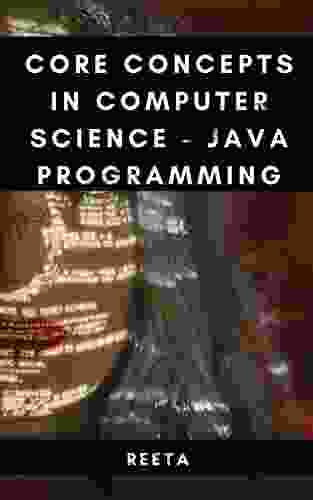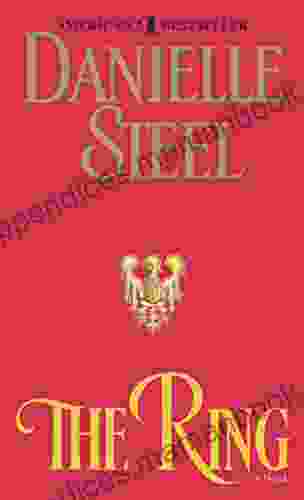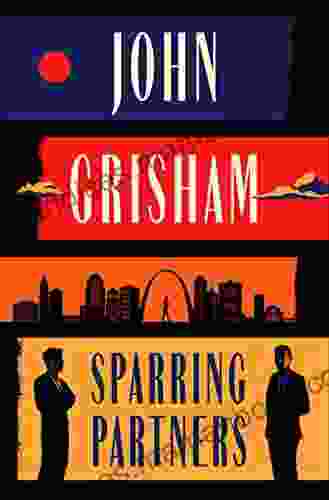Embrace the Core Concepts of Computer Science with Java Programming

Computer Science (CS) is the scientific study of computation and information. It encompasses a vast array of topics, from algorithm design to software engineering to artificial intelligence. Java is one of the most popular programming languages used in CS today, and it's an excellent way to learn the core concepts of the field.
This article will provide an overview of some of the core concepts of CS, as well as how they are implemented in Java. We'll cover topics such as data structures, algorithms, object-oriented programming, and concurrency. By the end of this article, you'll have a solid understanding of the foundational principles of CS and how to apply them in Java.
4 out of 5
| Language | : | English |
| File size | : | 450 KB |
| Text-to-Speech | : | Enabled |
| Screen Reader | : | Supported |
| Enhanced typesetting | : | Enabled |
| Print length | : | 16 pages |
| Lending | : | Enabled |
Data Structures
Data structures are used to organize and store data in a computer program. They provide a way to efficiently access and manipulate data, and they can be used to represent a wide variety of real-world entities, such as lists, trees, and graphs.
Java provides a rich set of built-in data structures, including arrays, lists, stacks, queues, and maps. These data structures can be used to store data of various types, such as integers, strings, and objects.
In addition to the built-in data structures, Java also provides an extensive library of third-party data structures. These data structures can be used to solve a wide range of problems, such as finding the shortest path in a graph or computing the convex hull of a set of points.
Here is an example of how to use a data structure in Java:
List
students.add("Alice"); students.add("Bob"); students.add("Carol");
for (String student : students){System.out.println(student); }
Algorithms
Algorithms are step-by-step procedures for solving computational problems. They are used in a wide variety of applications, such as searching for data, sorting data, and finding the shortest path in a graph.
Java provides a rich set of built-in algorithms, including algorithms for searching, sorting, and finding the minimum and maximum elements in a data structure. These algorithms can be used to solve a wide range of problems, and they can be customized to meet the specific needs of a particular application.
In addition to the built-in algorithms, Java also provides an extensive library of third-party algorithms. These algorithms can be used to solve a wide range of problems, such as finding the shortest path in a graph or computing the convex hull of a set of points.
Here is an example of how to use an algorithm in Java:
List
numbers.add(1); numbers.add(2); numbers.add(3);
// Sort the list using the built-in sort algorithm Collections.sort(numbers);
for (Integer number : numbers){System.out.println(number); }
Object-Oriented Programming
Object-oriented programming (OOP) is a programming paradigm that organizes code into objects. Objects are data structures that contain both data and methods, and they can be used to represent a wide variety of real-world entities, such as people, animals, and cars.
Java is an object-oriented programming language, and it provides a rich set of features for creating and managing objects. These features include encapsulation, inheritance, and polymorphism.
Encapsulation allows you to group data and methods together into a single unit, and it helps to protect the data from being accessed by unauthorized code. Inheritance allows you to create new classes that inherit the properties and methods of existing classes, and it helps to promote code reuse. Polymorphism allows you to write code that can be used with different types of objects, and it helps to make your code more flexible.
Here is an example of how to use OOP in Java:
class Person {
private String name; private int age;
public String getName(){return name; }
public void setName(String name){this.name = name; }
public int getAge(){return age; }
public void setAge(int age){this.age = age; }}
Person person = new Person();
person.setName("Alice"); person.setAge(25);
System.out.println(person.getName()); System.out.println(person.getAge());
Concurrency
Concurrency is the ability of a program to execute multiple tasks simultaneously. This can be useful for improving the performance of a program, and it can also be used to create more responsive user interfaces.
Java provides a rich set of features for creating and managing concurrent programs. These features include threads, locks, and thread pools.
Threads are lightweight processes that can be used to execute tasks concurrently. Locks are used to protect shared data from being accessed by multiple threads at the same time. Thread pools are used to manage a pool of threads, and they can help to improve the performance of a program by reducing the overhead of creating and destroying threads.
Here is an example of how to use concurrency in Java:
Thread thread = new Thread(() -> { });
thread.start();
thread.join();
This article has provided an overview of some of the core concepts of CS, as well as how they are implemented in Java. We've covered topics such as data structures, algorithms, OOP, and concurrency.
This is just a brief to CS, and there is much more to learn. However, the concepts covered in this article will provide you with a solid foundation for further study.
If you are interested in learning more about CS, there are many resources available online and at your local library. You can also find many CS courses offered at universities and colleges.
With hard work and dedication, you can learn the core concepts of CS and become a successful software developer.
4 out of 5
| Language | : | English |
| File size | : | 450 KB |
| Text-to-Speech | : | Enabled |
| Screen Reader | : | Supported |
| Enhanced typesetting | : | Enabled |
| Print length | : | 16 pages |
| Lending | : | Enabled |
Do you want to contribute by writing guest posts on this blog?
Please contact us and send us a resume of previous articles that you have written.
 Top Book
Top Book Novel
Novel Fiction
Fiction Nonfiction
Nonfiction Literature
Literature Paperback
Paperback Hardcover
Hardcover E-book
E-book Audiobook
Audiobook Bestseller
Bestseller Classic
Classic Mystery
Mystery Thriller
Thriller Romance
Romance Fantasy
Fantasy Science Fiction
Science Fiction Biography
Biography Memoir
Memoir Autobiography
Autobiography Poetry
Poetry Drama
Drama Historical Fiction
Historical Fiction Self-help
Self-help Young Adult
Young Adult Childrens Books
Childrens Books Graphic Novel
Graphic Novel Anthology
Anthology Series
Series Encyclopedia
Encyclopedia Reference
Reference Guidebook
Guidebook Textbook
Textbook Workbook
Workbook Journal
Journal Diary
Diary Manuscript
Manuscript Folio
Folio Pulp Fiction
Pulp Fiction Short Stories
Short Stories Fairy Tales
Fairy Tales Fables
Fables Mythology
Mythology Philosophy
Philosophy Religion
Religion Spirituality
Spirituality Essays
Essays Critique
Critique Commentary
Commentary Glossary
Glossary Bibliography
Bibliography Index
Index Table of Contents
Table of Contents Preface
Preface Introduction
Introduction Foreword
Foreword Afterword
Afterword Appendices
Appendices Annotations
Annotations Footnotes
Footnotes Epilogue
Epilogue Prologue
Prologue Toni Anderson
Toni Anderson Jody Jensen Shaffer
Jody Jensen Shaffer Craig L Symonds
Craig L Symonds Stephen Denning
Stephen Denning Zack Horton
Zack Horton Ian Cumpstey
Ian Cumpstey Jon Taffer
Jon Taffer Wilson Tang
Wilson Tang Byron Comstock
Byron Comstock Jason D Medlin
Jason D Medlin Claude Bugeia
Claude Bugeia Edugorilla Prep Experts
Edugorilla Prep Experts Mike Smetzer
Mike Smetzer Robyn Herzman
Robyn Herzman Philip Larkin
Philip Larkin Kim Holderness
Kim Holderness Bagyalakshmi S
Bagyalakshmi S George Szirtes
George Szirtes Sneha K
Sneha K Lucille Brown
Lucille Brown
Light bulbAdvertise smarter! Our strategic ad space ensures maximum exposure. Reserve your spot today!
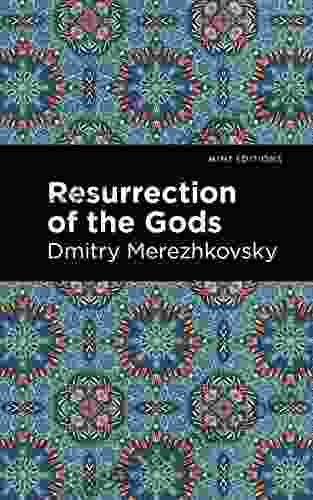
 Henry David ThoreauResurrection of the Gods: Mint Editions Literary Fiction - Rediscovering the...
Henry David ThoreauResurrection of the Gods: Mint Editions Literary Fiction - Rediscovering the... Denzel HayesFollow ·7.8k
Denzel HayesFollow ·7.8k Jamie BellFollow ·14.3k
Jamie BellFollow ·14.3k Ian PowellFollow ·7.7k
Ian PowellFollow ·7.7k Jonathan FranzenFollow ·8.7k
Jonathan FranzenFollow ·8.7k Jack PowellFollow ·10.2k
Jack PowellFollow ·10.2k Brody PowellFollow ·19.8k
Brody PowellFollow ·19.8k Don ColemanFollow ·13.1k
Don ColemanFollow ·13.1k Christian CarterFollow ·6.3k
Christian CarterFollow ·6.3k

 Jamie Blair
Jamie BlairA Delightful Blend of Love and Laughter: Exploring Short...
In the realm of literature, where imagination...
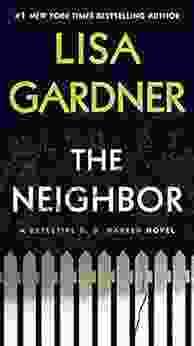
 Gary Cox
Gary CoxDetective Warren: A Gripping Tale of Suspense and...
Step into the enigmatic world of Detective...
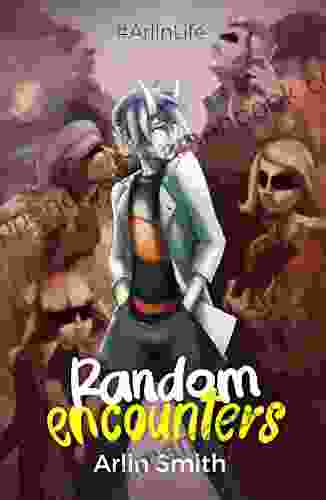
 Junot Díaz
Junot DíazArlinlife Random Encounters: An In-Depth Exploration of...
Arlinlife Random Encounters is a...
4 out of 5
| Language | : | English |
| File size | : | 450 KB |
| Text-to-Speech | : | Enabled |
| Screen Reader | : | Supported |
| Enhanced typesetting | : | Enabled |
| Print length | : | 16 pages |
| Lending | : | Enabled |


